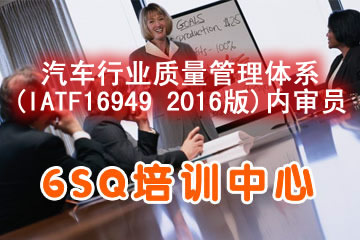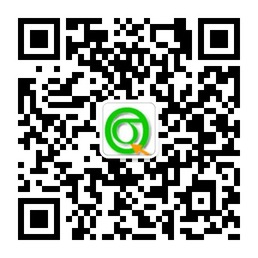Quality Assurance
Preventing quality problems:{V{V{V{V{V{V
Quality assurance, in its broadest sense, is any action taken to prevent quality problems from occurring. In practice,this means devising systems for carrying out tasks which directly affect product quality.A simple example of quality assurance is a cooking recipe. A recipe is a system for preparing a particular dish. It describes the ingredients and utensils necessary to prepare the food, the method of cooking it, how to test when it is ready, how to store it, and how to serve it. Cooking to a recipe produces better and more consistent results. And thesame applies to using systems in other situations.
To implement systems for an organisation, you need to carry out three basic steps: first develop the system; second,document it (this takes the form of policies, procedures, and reference information); and third, inform, instruct, and train staff to use it.
Systems of various kinds are, of course, already an integral part of all organisations. But in most cases they do not thoroughly address quality as a separate and important issue. This changes when an organisation embraces and pursues quality assurance. Quality assurance does not only apply to products. Services, and even "non-production"activities such as administration and sales, benefit from a quality assurance approach.
Quality Assurance standards:
Quality Assurance Standards are published documents which describe in detail what systems should be used by a company to manage quality.
These Standards exist because many large organisations will not buy from suppliers who cannot give them assurance that they have systems which support quality. These large organisations include Government Defense Departments,Health Departments, car manufacturers such as Ford, Toyota, and General Motors, and Aerospace companies such as Boeing and Lockheed.
Until the mid 1980's these large organisations published their own standards or codes for suppliers to follow, and their staff would audit supplier companies regularly to make sure they followed the code. It was not unusual for a supplier to be audited separately by a number of larger customers, all with their own quality system codes. In some instances suppliers hosted 30 or 40 quality system audits a year from all their major customers. To reduce the number of audits to which individual suppliers were subjected, the International Organisation for Standards (ISO) published a series of standards in 1987 known as ISO 9000. Most large purchasing organisations accepted this worldwide standard and ceased to issue their own codes. They also ceased carrying out their own audits and accepted the findings of independent audit companies engaged by supplier companies to check their systems against the ISO 9000 standards. This allowed supplier companies to reduce the number of audits to two or three per year.
Some of the independent audit companies operating in Australia are Lloyds Quality Assurance Services, Quality Assurance Services (QAS), Bureau Veritas, Benchmark Certification, SGS QA Services, and National Assocation of
Testing Authorities (NATA).
The ISO 9000 series of QA standards:
ISO 9000 is the name of a series of QA standards recognised by over 200 countries around the world and adopted as their national standards for QA. In Australia this series has been named the AS 3900 series, but this will change in mid 1995 to the AS/NZ/ISO 9000 series to identify it more closely with the international standard. AS 3900 and ISO9000 have identical contents.
The most important document in the ISO 9000 series is ISO 9001. This is the code against which audits are actually carried out (two other documents, ISO 9002 and ISO 9003, can also be audited against but these are 'cut down' versions of ISO 9001 for companies which do not need to comply with the entire code). All the other documents in the ISO 9000 series provide guidelines and explanations for how to apply ISO 9001.
The principal features of ISO 9001 are that it,takes the basic principle of QA (the need for documented systems to support QA), and adds requirements to control system documentation to make sure it is kept up-to-date
requires companies to carry out their own internal audits of their QA system to make sure it is working properly requires the QA system to be constantly monitored to ensure that it is effective, and that changes are constantly made to improve it.
In addition, ISO 9001 requires organisations to include documented systems in their QA system to cover all aspects of: basic quality control (inspection, testing, test records, traceability, etc.) a product's life cycle from the time negotiations start with the customer, through the design process,
purchasing of raw materials, production, storage, and final delivery.
When is QA appropriate:
The basic principle of QA - working out the best course of action beforehand and communicating it reliably to all those concerned - should be applied whenever a planned process is complex, has implications for other processes, or has wide or repetitious application. Beyond this, the decision to follow the specifications in a comprehensive published QA standard rests on your organisation's answers to the following questions:
Is your organisation prepared to invest the time to follow the formal discipline required?
Does the law require your organisation's compliance with a specific standard (pharmaceutical manufacturers
must comply with the Code of GMP)?
Do your customers insist on your organisation's compliance with a standard (many large companies and Government Agencies and Departments have a policy of preference for suppliers with QA Certification)?
How to implement a QA system:
You can implement quality assurance in a general way by identifying the tasks, processes, or systems critical to the business and writing clear guidelines and instructions for staff. Use these guidelines and instructions for training and day-to-day reference. For the tasks, processes and systems covered, this will reduce:
the number of errors
waste of time and materials associated with errors
the number of customer complaints
the number of problems to fix
the time spent on giving day-to-day instructions
the time needed to improve processes and systems (by establishing a stable base)
You can then take this general principle of clearly documenting tasks, processes and systems to the next level by using ISO 9000 (or another appropriate QA system code) as a model for covering all aspects of quality, and for establishing formal disciplines for controlling information accuracy, and reviewing and improving systems. The two levels of implementation are summarised in the table below. The table also lists the additional things you can do to make your quality assurance easier to apply and even more effective.
{V
Quality assurance, in its broadest sense, is any action taken to prevent quality problems from occurring. In practice,this means devising systems for carrying out tasks which directly affect product quality.A simple example of quality assurance is a cooking recipe. A recipe is a system for preparing a particular dish. It describes the ingredients and utensils necessary to prepare the food, the method of cooking it, how to test when it is ready, how to store it, and how to serve it. Cooking to a recipe produces better and more consistent results. And thesame applies to using systems in other situations.
To implement systems for an organisation, you need to carry out three basic steps: first develop the system; second,document it (this takes the form of policies, procedures, and reference information); and third, inform, instruct, and train staff to use it.
Systems of various kinds are, of course, already an integral part of all organisations. But in most cases they do not thoroughly address quality as a separate and important issue. This changes when an organisation embraces and pursues quality assurance. Quality assurance does not only apply to products. Services, and even "non-production"activities such as administration and sales, benefit from a quality assurance approach.
Quality Assurance standards:
Quality Assurance Standards are published documents which describe in detail what systems should be used by a company to manage quality.
These Standards exist because many large organisations will not buy from suppliers who cannot give them assurance that they have systems which support quality. These large organisations include Government Defense Departments,Health Departments, car manufacturers such as Ford, Toyota, and General Motors, and Aerospace companies such as Boeing and Lockheed.
Until the mid 1980's these large organisations published their own standards or codes for suppliers to follow, and their staff would audit supplier companies regularly to make sure they followed the code. It was not unusual for a supplier to be audited separately by a number of larger customers, all with their own quality system codes. In some instances suppliers hosted 30 or 40 quality system audits a year from all their major customers. To reduce the number of audits to which individual suppliers were subjected, the International Organisation for Standards (ISO) published a series of standards in 1987 known as ISO 9000. Most large purchasing organisations accepted this worldwide standard and ceased to issue their own codes. They also ceased carrying out their own audits and accepted the findings of independent audit companies engaged by supplier companies to check their systems against the ISO 9000 standards. This allowed supplier companies to reduce the number of audits to two or three per year.
Some of the independent audit companies operating in Australia are Lloyds Quality Assurance Services, Quality Assurance Services (QAS), Bureau Veritas, Benchmark Certification, SGS QA Services, and National Assocation of
Testing Authorities (NATA).
The ISO 9000 series of QA standards:
ISO 9000 is the name of a series of QA standards recognised by over 200 countries around the world and adopted as their national standards for QA. In Australia this series has been named the AS 3900 series, but this will change in mid 1995 to the AS/NZ/ISO 9000 series to identify it more closely with the international standard. AS 3900 and ISO9000 have identical contents.
The most important document in the ISO 9000 series is ISO 9001. This is the code against which audits are actually carried out (two other documents, ISO 9002 and ISO 9003, can also be audited against but these are 'cut down' versions of ISO 9001 for companies which do not need to comply with the entire code). All the other documents in the ISO 9000 series provide guidelines and explanations for how to apply ISO 9001.
The principal features of ISO 9001 are that it,takes the basic principle of QA (the need for documented systems to support QA), and adds requirements to control system documentation to make sure it is kept up-to-date
requires companies to carry out their own internal audits of their QA system to make sure it is working properly requires the QA system to be constantly monitored to ensure that it is effective, and that changes are constantly made to improve it.
In addition, ISO 9001 requires organisations to include documented systems in their QA system to cover all aspects of: basic quality control (inspection, testing, test records, traceability, etc.) a product's life cycle from the time negotiations start with the customer, through the design process,
purchasing of raw materials, production, storage, and final delivery.
When is QA appropriate:
The basic principle of QA - working out the best course of action beforehand and communicating it reliably to all those concerned - should be applied whenever a planned process is complex, has implications for other processes, or has wide or repetitious application. Beyond this, the decision to follow the specifications in a comprehensive published QA standard rests on your organisation's answers to the following questions:
Is your organisation prepared to invest the time to follow the formal discipline required?
Does the law require your organisation's compliance with a specific standard (pharmaceutical manufacturers
must comply with the Code of GMP)?
Do your customers insist on your organisation's compliance with a standard (many large companies and Government Agencies and Departments have a policy of preference for suppliers with QA Certification)?
How to implement a QA system:
You can implement quality assurance in a general way by identifying the tasks, processes, or systems critical to the business and writing clear guidelines and instructions for staff. Use these guidelines and instructions for training and day-to-day reference. For the tasks, processes and systems covered, this will reduce:
the number of errors
waste of time and materials associated with errors
the number of customer complaints
the number of problems to fix
the time spent on giving day-to-day instructions
the time needed to improve processes and systems (by establishing a stable base)
You can then take this general principle of clearly documenting tasks, processes and systems to the next level by using ISO 9000 (or another appropriate QA system code) as a model for covering all aspects of quality, and for establishing formal disciplines for controlling information accuracy, and reviewing and improving systems. The two levels of implementation are summarised in the table below. The table also lists the additional things you can do to make your quality assurance easier to apply and even more effective.
{V
没有找到相关结果
已邀请:





7 个回复
vacationman (威望:0)
赞同来自: